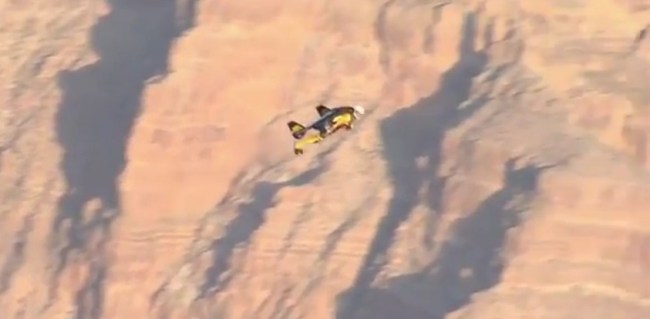 There are flight simulators, and then there’s the “Jetman.” Yves Rossy, an inventor and flying daredevil, used his own winged jet pack to fly around the Grand Canyon yesterday morning, reports Popular Science. Diving off a helicopter about 8,000 feet from the bottom of the canyon, Rossy dived for a bit and then started up his winged contraption and used the rudder-based steering to level himself off. During his eight minute flight, he hit speeds of 190 miles per hour as he soared about 200 feet above the rim of the canyon.
There are flight simulators, and then there’s the “Jetman.” Yves Rossy, an inventor and flying daredevil, used his own winged jet pack to fly around the Grand Canyon yesterday morning, reports Popular Science. Diving off a helicopter about 8,000 feet from the bottom of the canyon, Rossy dived for a bit and then started up his winged contraption and used the rudder-based steering to level himself off. During his eight minute flight, he hit speeds of 190 miles per hour as he soared about 200 feet above the rim of the canyon.
Rossy’s flight was originally scheduled for last Friday, but it was scrapped when the FAA got involved. The Federal Aviation Agency didn’t know how to classify Rossy’s winged jet pack, which he thought of and designed himself.
This marks Rossy’s first “jetwing” flight in the United States, but the Swiss daredevil been pulling aerial wonders oversees for years. In 2006, he became the first person to sustain human flight when he flew across Bex for six minutes and nine seconds. In 2008, he successfully flew across the English Channel, a nine minute and seven second flight. He also flew over the alps that year. In 2010, he attempted to fly across the Strait of Gibralter to claim the title of the first man to fly across continents, but had to abort the flight and crash land in the sea due to high winds. He was unhurt.
When Rossy isn’t flying himself, he’s piloting planes. He has served as a fighter pilot in the Swiss Air Force, but currently pilots an Airbus A320 for Swiss International Air Lines.


